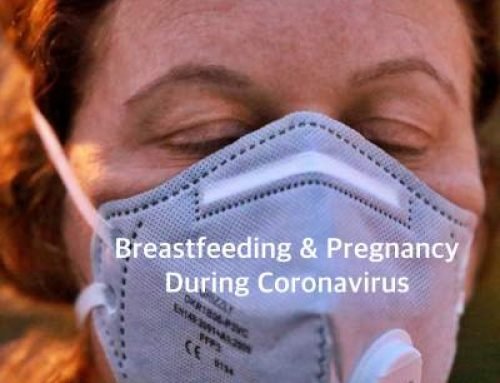Osteoporosis
Osteoporosis
[one_half last=”no” spacing=”yes” background_color=”” background_image=”” background_repeat=”no-repeat” background_position=”left top” border_size=”0px” border_color=”” border_style=”” padding=”” class=”” id=””]
What is osteoporosis/osteopenia?
Osteoporosis is a disease characterized by low bone mass which leads to weakening of the bones. Osteopenia is a disease where the bone density is lower than average and can be a precursor to osteoporosis.
What are the symptoms?
Most patients with osteoporosis do not know that they have it until they have a fracture because there are no early symptoms. Because the goal of treating osteoporosis is to prevent fractures, doctors often recommend testing for osteoporosis based on clinical suspicion and risk factors. People with osteoporosis can break a bone with even a minor fall. Hip fractures and vertebral (the bones that make up the spine) fractures are the most common sites for osteoporosis- related fractures. Vertebral fractures lead to loss of height and chronic back pain. Hip fractures are a serious complication of osteoporosis because they often require surgery and hospitalization and lead to loss of independence and mobility. Because osteoporosis can affect all bones in the body, a low impact fracture of the wrist or ankle should also raise suspicion of the disorder.
Who is at risk for osteoporosis?
• Advanced age (>65 years)
• History of fracture as an adult
• Family history of osteoporosis or adult fracture
• Low body weight (BMI <22)
• Current smoking
• Use of certain medications such as corticosteroids, anticonvulsants, depot medroxyprogesterone acetate, or chemotherapy.
• Early menopause (at age <45 years) • Excess alcohol intake (>2 drinks per day) • Chronic medical conditions such as: malabsorption syndromes, inflammatory bowel disease, chronic liver or kidney disease and gastric bypass.
How can I find out if I have osteoporosis?
Bone density measurements taken using dual-energy x-ray absorptiometry (DXA scan) is the most commonly used method. It measures bone mineral density (BMD) at the hip, wrist and spine. Results of DXA screening are reported in T-scores, which are a comparison of an individual’s bone mass to the average peak bone mass for healthy young adults of the same sex. A T-score of less than -2.5 categorizes a patient as having osteoporosis; whereas a T-score between -1.0 and -2.5 gives at patient a diagnosis of osteopenia.
What is the treatment for osteoporosis? How can I prevent it?
Oral calcium and vitamin D supplementation are important for both prevention and treatment. In addition, a regular[/one_half][one_half last=”yes” spacing=”yes” background_color=”” background_image=”” background_repeat=”no-repeat” background_position=”left top” border_size=”0px” border_color=”” border_style=”solid” padding=”” class=”” id=””]
exercise program that includes weight-bearing exercise, such as walking and lifting weights, can help prevent fractures. In addition, there are prescription medications that can be prescribed for osteoporosis treatment and prevention, including bisphosphonates, estrogens, calcitonin and selective estrogen receptor modulators, parathyroid hormone and denosumab. These FDA-approved medications have been shown to reduce osteoporosis-related fractures in postmenopausal women. There are many factors which may lead a physician to prescribe one medication over the other, and you should speak to your doctor about the right choice for you. Although hormone therapy for postmenopausal women has been shown to reduce fracture risk, it is not the first choice of therapy for most women because its benefits only last for the duration of therapy. Patients diagnosed with osteoporosis and placed on medication should have a follow up measurement of bone density 1-2 years after starting treatment to observe the effectiveness of the medication.
Who should be treated for osteoporosis?
Every woman over age 50 should take steps to maintain bone health and prevent/slow the onset of osteoporosis. Taking a daily calcium supplement, and participating in a regular, weight-bearing exercise program are easy ways to optimize bone health. Women should discuss with their physician their individual risk factors, the need to check blood vitamin D levels and the need for BMD scans.
The decision regarding which patients require pharmacologic treatment is based on fracture risk and usually takes into account both bone density and personal risk factors. According to the National Osteoporosis Foundation, treatment should be offered to patients with one of the following criteria:
• A hip or vertebral (clinical or morphometric) fracture
• T-score ≤ -2.5 at the femoral neck or spine
• Low bone mass (T-score between -1.0 and -2.5 at the femoral neck or spine) AND a high risk for fracture in the next
10 years based on the individual’s medical and family history
Summary of recommendations:
• Total daily dietary intake of 1200 mg calcium and 800 IU vitamin D daily
• Regular weight-bearing exercise
• Screening for osteoporosis via DXA scan in patients at risk
• Treatment of osteoporosis with both lifestyle modification and pharmacologic treatment in patients with a history of fracture or high risk for future fracture.
• Avoidance of tobacco use and excess alcohol use
Revised 2011
For more information on this and other reproductive health
topics, visit www.ReproductiveFacts.org
[/one_half]
Insurance
Embry Women’s Health is committed to providing quality, affordable health care. We’re in-network with all major insurance plans, including Aetna, Blue Cross Blue Shield, Cigna and UnitedHealthcare. No insurance? No problem. We offer a simple fee schedule for those who wish to pay out-of-pocket. Click the button below for our complete list and more information:














Leave A Comment